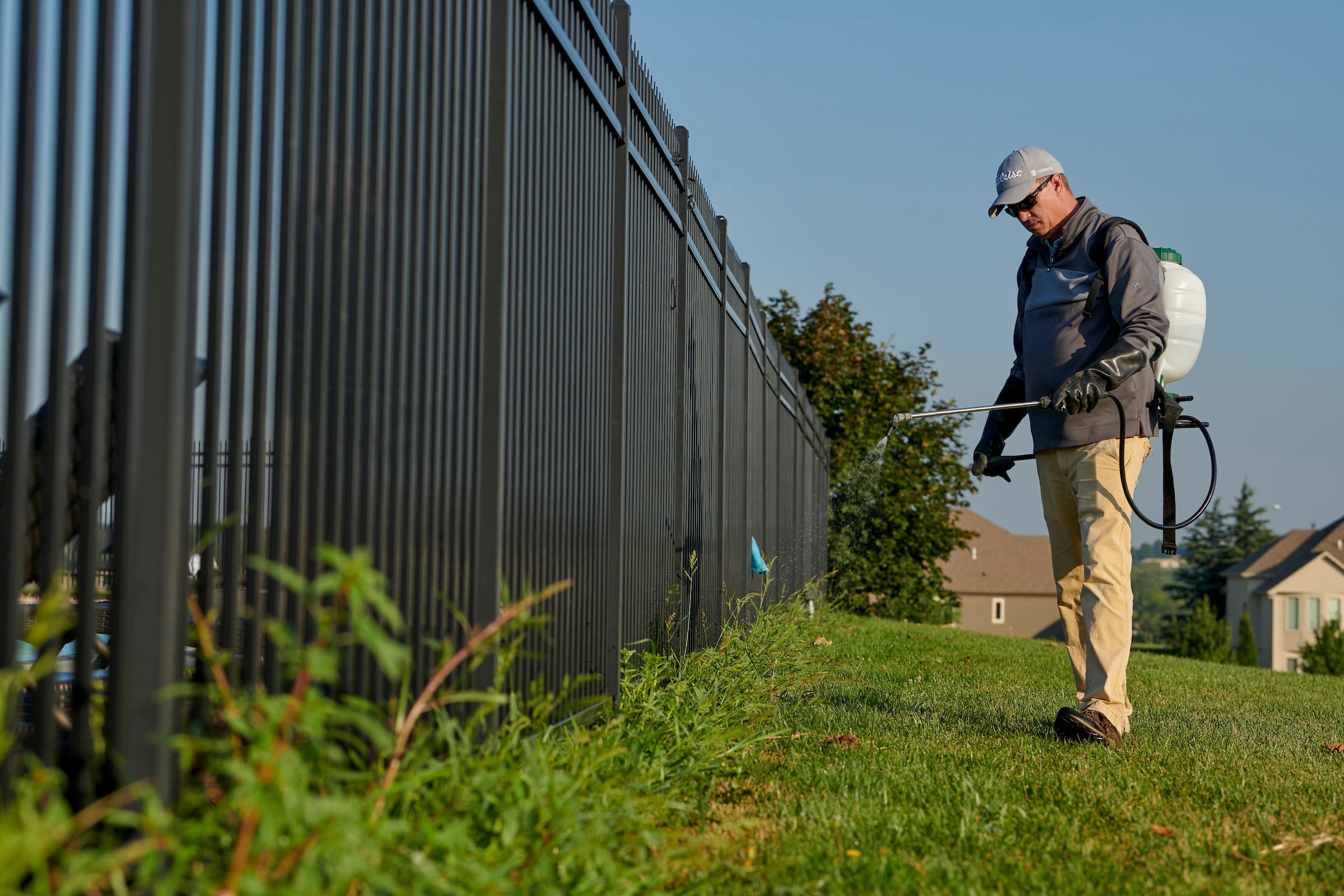
One of the adversaries that lawn care operators frequently have to battle is nutsedges. Sedge species are neither grasses nor broadleaves and are highly competitive against turfgrasses.
The two most common species are purple and yellow nutsedge, which can be challenging to identify without the presence of seed heads. Both have triangular-shaped stems, but purple nutsedge leaves are abruptly pointed, while yellow nutsedge leaves slowly taper to a point.
Purple nutsedge is more difficult to control as it has more tuber production. Green kyllinga and false-green kyllinga are other challenging sedges. Proper identification is critical for proper control practices of the sedge species.
“Nutsedge is challenging to control for several reasons,” says Andrew Osburn, Ph.D., technical service manager of South Central/Western regions for FMC. “The most common nutsedges are perennial weeds that grow from tubers, sometimes referred to as nutlets, and can be a reoccurring problem year after year. A single plant can produce several hundred tubers in a season, and a few plants can quickly lead to a problematic infestation. These tubers can exist deep in the soil. While most are located within the top six inches of soil, some tubers can be found deeper in the soil system.”
Cultural Control Methods
Nutsedges tend to thrive in overly irrigated or poorly drained areas.
“Solving draining issues can help reduce nutsedge populations by eliminating their preferred habitat,” Osburn says. “This also serves to promote healthier turfgrass and with all weed control, a competitive and healthy turfgrass sward is the first line of defense against weeds. However, once nutsedge populations become established, they can survive in adequately irrigated areas and even during drought conditions.”
Eric Reasor, Ph.D., Southeast research scientist for PBI-Gordon Corporation, says if a nutsedge infestation is present, check irrigation systems to make sure the turf is not getting overwatered or there aren’t any excess overlaps between irrigation heads.
Osburn says preventative methods include ensuring the sedges are not introduced through sod containing foreign plant matter and thoroughly cleaning equipment to reduce the spread of rhizome fragments.
Establishing healthy turfgrass through proper mowing, fertilization and other techniques also can help reduce nutsedge populations.
“Increase turfgrass mowing heights during stress periods,” Reasor says. “This is very important for cool-season grasses in summer when the nutsedge is most competitive against the desirable turfgrass.
Mechanical removal of sedges is not feasible outside of landscape beds due their underground structures of tubers and rhizomes.
“Cultural control and preventive measures are the foundation of a weed management program for nutsedges,” Reasor says “Nutsedges are very opportunistic and competitive weeds and herbicide applications are required more often than not for acceptable control.”
Chemical Control Methods
For effective control of nutsedge species, multiple herbicide applications are needed. Preemergent applications can be used to inhibit their emergence, but post-emergent treatments are more common because it is a perennial weed. Osburn adds it’s important to rotate chemistry every two to three years to manage herbicide resistance.
Active ingredients for nutsedge control include, but are not limited to:
- Pyrimisulfan (Arkon and Vexis)
- Flazasulfuron (Katana)
- Trifloxysulfuron (Monument and Recognition)
- Halosulfuron (Prosedge, Sedge Hammer)
- Imazosulfuron (Celero)
- Sulfentrazone (Dismiss, Dismiss NXT)
- Imazaquin (Image)
- Bentazon (Basagran)
Osburn says one of the reasons nutsedge is difficult to control is because the window for effective treatments may differ from other grassy and broadleaf weeds.
“Herbicide application timing is critical for effective nutsedge control,” Reasor says. “It is important to apply herbicides soon after nutsedge emergence in the spring. This application timing limits the number of rhizomes and tubers the plant can produce to further spread. Waiting until mid-summer to treat for nutsedge gives the plants time to grow more rhizomes and tubers to re-grow and survive herbicide applications.”
Osburn elaborates that the ideal timing is when the soil at a 2-inch depth is consistently 65°F.
“Additionally, it will likely require multiple years, two to three, before the tuber population is reduced by 90%,” Osburn says.
Missing the best treatment window can result in a need for additional applications. While these treatments can control or reduce above-ground evidence of nutsedge, they will not reduce the tuber population as thoroughly.

